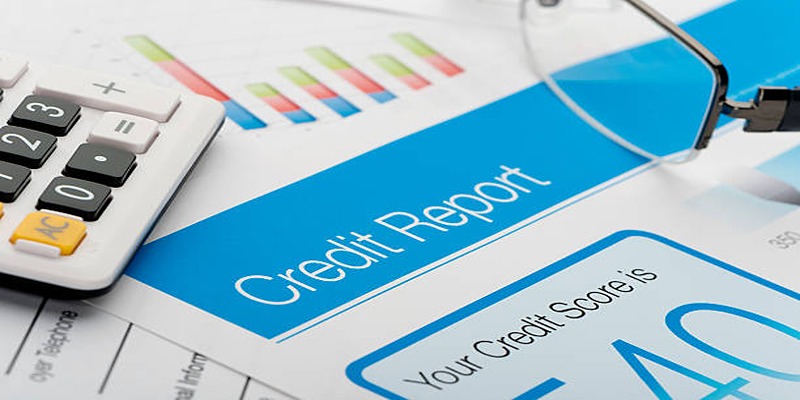Filing for bankruptcy can feel overwhelming, and it often lowers your credit score. However, it doesn’t stay on your credit report forever. By understanding your rights and following the right steps, you can work towards removing outdated or incorrect bankruptcy records from your credit report. This guide aims to explain the process in simple terms, so you can rebuild your credit and feel more confident about your financial future.
What Does a Bankruptcy Mean for Your Credit Report?

When you file for bankruptcy, it leaves a significant mark on your credit report. This mark can linger for up to 10 years, depending on the type of bankruptcy filed. This negative record may affect your ability to secure loans, obtain credit cards, rent apartments, or even land certain jobs. However, while it seems like a permanent scar, there are steps you can take to improve your credit and work through it strategically.
Can Bankruptcy Be Removed Before the Term Expires?
The short answer is yes, but only under certain circumstances. Bankruptcy can legitimately be removed from your credit report before the standard reporting period (7 years for Chapter 13 bankruptcy and 10 years for Chapter 7) if it’s reported inaccurately. Ensuring that all the information on your credit report is correct is critical for building up your credit and financial profile.
Step 1: Obtain Your Credit Report
The first step in addressing bankruptcy on your credit record is understanding exactly what’s there. You can request free copies of your credit report annually from the three major credit bureaus:
- Equifax
- Experian
- TransUnion
Start by analyzing your reports for any inaccuracies. Check bankruptcy entries as well as related accounts to ensure they’ve been properly updated to reflect the bankruptcy terms (e.g., discharge vs. active status).
What to Check For:
- Incorrect case numbers
- Wrong dates (filing or discharge dates)
- Misreported account balances
- Duplicate bankruptcy listings
Mistakes happen more often than you might think. Look carefully for errors that could red-flag your financial health to lenders.
Step 2: File a Dispute for Incorrect Listings
If you spot inaccuracies related to your bankruptcy, you have the right to dispute those errors with the credit bureaus. Each credit reporting agency (Equifax, Experian, TransUnion) allows for online, mail, or phone-based disputes.
Tips for Filing a Dispute:
- Write Clearly: Your dispute letter should be concise, accurate, and professional. Include all critical details with supporting documents.
- Attach Proof: Provide copies of your bankruptcy case dismissal, discharge documents, or other relevant paperwork.
- Follow Up: Credit bureaus must investigate your dispute within 30 days of receipt, but it’s wise to stay on top of progress.
If the bureau determines the listing is inaccurate, it will remove or update the entry accordingly.
Step 3: Confirm Public Record Accuracy
Bankruptcy filings are public records, which means credit bureaus might gather this information from courts. Sometimes, inaccuracies stem from the public record itself, rather than the credit report.
If the discrepancy originates from courthouse documents, follow these steps:
- Contact the Court: Confirm that the information they provided to credit bureaus is accurate.
- Request Corrections: If errors exist, file a formal request with the court to update the information. Provide all necessary documentation.
- Send Updated Records to Credit Bureaus: Once corrected, ensure updated information is forwarded to the appropriate credit bureaus.
Step 4: Monitor Your Credit Regularly
After submitting disputes or addressing errors, it’s crucial to actively monitor your credit report. Tracking any unauthorized changes will empower you to act quickly. Consider using credit monitoring services, many of which offer real-time alerts for changes or updates to your report.
Some popular monitoring tools include:
- Credit Karma
- myFICO
- IdentityForce
Step 5: Rebuild and Strengthen Your Credit
Improving your overall credit health can lessen the long-term impact of a bankruptcy listing. Diligently practicing good financial habits can rebuild your score while you wait for the bankruptcy mark to age off your report.
Tips for Rebuilding Credit:
- Focus on Timely Payments: Showing lenders you can consistently meet payment deadlines goes a long way in overcoming a bankruptcy mark.
- Open a Secured Credit Card: These cards require a deposit and can be a great starter tool toward demonstrating responsible credit use.
- Reduce Debt: Pay down any remaining balances on accounts that weren’t included in the bankruptcy.
- Keep Credit Utilization Low: Aim to use no more than 30% of your available credit limits.
- Diversify Credit Types: Use a mix of credit cards, installment loans, or retail accounts to build a robust credit profile.
The goal is to prove to creditors that you’re reliable, and in time, these positive actions will reflect in your credit score.
Step 6: Consult a Credit Repair Specialist (If Needed)
If your bankruptcy report feels overwhelming to handle alone or if disputes don’t lead to a resolution, consulting a professional credit repair service may help.
Credit repair companies specialize in identifying inaccuracies on credit reports and handling disagreements. They can act as an advocate throughout the process, ensuring all proper steps are followed. However, always research reputable services to avoid scams, as not all credit repair companies operate ethically.
Conclusion
While bankruptcy may seem like an easy way out of debt, it’s important to understand the long-term consequences and alternatives available. Credit repair can help improve your credit score after bankruptcy, but it’s crucial to have a plan in place and make responsible financial decisions moving forward. Consider speaking with a financial advisor or credit counselor for personalized guidance on rebuilding your credit after bankruptcy.













